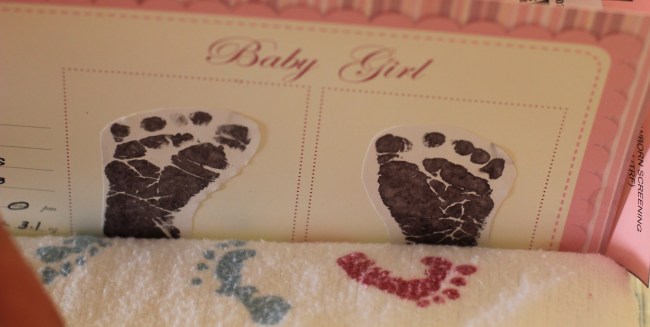
Ah, probiotics. The supplement du jour.
It was only a matter of time. Just as we started wrapping our heads around the concept of consuming “live cultures” for gut health, the market spilled into the realm of baby products.
Would you deny your baby something that promises eternal tummy happiness?
WHAT ARE PROBIOTICS?
Is it me, or are probiotics one of those things that we nod our head in conversation and go “oh, sure, totally, it’s soooo important” without having a freaking clue what we are talking about?
Here’s a super quick summary of our belly bugs —
We eat stuff… let’s say kale. Our measly human machinery cannot break down the tough bits in kale. We simply do not have the tools.
You know who does have the tools? Bacteria. Specialized little worker bugs that hang out in our intestine with their tools all ready for the kale chunks that escape our ill-equipped stomach.
In exchange for room and board, those little worker bugs break down that kale and kick back some nutrients we would have missed. Kale-eatin’ bugs are only the start. Along with a range of other little bug friends, our gut is host to a beautiful little ecosystem that, when kept happy and in balance, can confer all kinds of health benefits.
Probiotics? Anything that you might ingest containing live microorganisms (bacteria) that pass through the digestive system to confer “benefits” once they reach the intestines. For example, a whole range of yogurt products have “live cultures” on board and are promoted as probiotics.
Here’s the problem — our gut is already jam packed with resident bacteria. After those “live cultures” brave the digestive passage to end up in your gut, they drop off the good stuff they already made while waiting out in the yogurt, and pass on through. The real estate landscape is already too crowded and the residents are not likely to make room for the new guys.
But you know whose gut does have a lot of open real estate?
Babies.
COLONIZING THE BABY GUT
In order to establish residency, the microbes have to get there.
When they’re born, babies are rubbed all over by bacteria that may be important for gut colonization. The gut of a C-section babies compared to a vaginal birth babies shows profound differences. Babies that come out on their own have higher quantities of helpful microbes. Presumably, this is a result of spending time in the birth canal. But, this study cannot rule out another possible influence — C-section mamas went through major surgery and weren’t able to nurse immediately or effectively for the days before the test (samples taken on day 3 post-birth) [1].
Which brings us to that mama milk.
We all know that breast milk passes along important antibodies, but here’s another thing that breast milk may provide— gut bacteria.
Yes, helpful microbes may also be passed along in the milk [2].
More importantly, human breast milk contains a critical prebiotic to sustain the helpful bacteria.
PREBIOTICS ARE MORE IMPORTANT THAN PROBIOTICS
Ok, prebiotics, what are those?
Think of prebiotics as the food for the good bacteria. Without a prebiotic, the probiotic bacteria reaching the intestine realize that there is nothing for them to do and nothing for them to eat, and they wave goodbye to the other bacteria setting up shop and head on out the other end. They are probably not around long enough to confer any kind of benefit to that baby.
No food? No bugs.
Human breast milk has special complex sugars, called Human Milk Oligosaccharides. The human body cannot digest these sugars. Only specialized bacteria can digest them. By introducing this prebiotic, the bacteria that feast on this specific sugar flourish. They set up shop and multiply. They also kick back amazing benefits — immune system building, preparing a happy gut for adulthood, and the list goes on.
But these bacteria will only set up shop if they have those special mama sugars available. No sugars? No food. No bugs.
You can have a prebiotic without a probiotic, but a probiotic without a prebiotic is useless.
Adult side note:
One funny thing about this all is that a common probiotic on the market is a little posse of bacteria called Bifidobacteria. These bacteria were first isolated from baby poo and now they are the main health bug in a whole range of probiotic products aimed at adults.
The problem? Bifido prefers Human Milk Oligosaccharides as a prebiotic. Since I’m pretty sure no adult is taking a healthy swig of breast milk on a daily basis, it’s hard to say how much benefit our adult gut is getting from adding these fellas to our daily diet.
BACK TO THE BABIES! THE VERDICT?
Hmmm…
First, here are my general concerns —
One, you are essentially feeding your baby bacteria. Where is this bacteria coming from? How is it controlled, isolated, tested?
Two, the baby gut is trying to do it’s thing. It is set up to do it’s thing. Do we need to play puppet master to a community that has evolved for beautiful symbiotic balance?
So, at first I would have said “NO, crazy!” but upon greater reflection I have softened my stance.
A few scenarios:
Natural birth, breastfeeding mama — why mess with nature? This is my category, and, personally, I will not be giving the wee one probiotics.
C-section, breastfeeding mama — Tough one. We still do not know how important the exit strategy is for setting up the important bacteria. Maybe they could use a boost?
Super early baby, breastfeeding mama — Ok, for this one there are some data. A recent study in a NICU, doctors gave babies born pre-term (< 32 weeks), daily doses of a carefully screened probiotic. There was a significant reduction in necrotizing enterocolitis (a super scary intestinal disease in preemies). Sure, the numbers went from 10% to 5% but when you are talking about babies, every baby counts. The authors conclusion was to adopt daily probiotic administration into the protocol of pre-term care [3].
See a pattern? Breastfeeding is key. The boobs make the prebiotic.
Even in the NICU study, 93% of the mothers were nursing.
FORMULA + PROBIOTICS?
Only human milk has the one true prebiotic to encourage the happy bugs to grow and establish their community.
To get around this, formula companies have tried to mimic Human Milk Oligosaccharides with a combination of complex, but not as complex, sugars: Galacto-oligosaccharides and Fructo-oligosaccharide (GOS/FOS). Some research suggests that having this GOS/FOS prebiotic is enough to get the happy bacteria established in the baby gut similar to the breast-fed baby (no probiotic necessary) [4]. Other research warns that we don’t know enough about GOS/FOS to be messing around with it [5].
Research on everything involving the baby gut is still in its infancy (pun intended).
We haven’t mapped out every inch of bacterial real estate in the ever changing baby intestine. We don’t know the job description for every occupant. We don’t know the long-term effects of manipulating the landscape.
I say, leave ‘em be for now.
The baby will figure out how to walk.
The microbes will figure out how to flourish.
1. Jost, T., Lacroix, C., Braegger, C., Chassard, C., 2013. Assessment of bacterial diversity in breast milk using culture-dependent and culture-independent approaches. Br J Nutr 110, 1253–1262span>
2. Biasucci, G., Rubini, M., Riboni, S., Morelli, L., Bessi, E., Retetangos, C., 2010. Mode of delivery affects the bacterial community in the newborn gut. Early Human Development 86, 13–15.
3. Janvier, A., Malo, J., Barrington, K., 2014. Cohort Study of Probiotics in a North American Neonatal Intensive Care Unit. The Journal of Pediatrics 164, 980–985.
4. Bakker-Zierikzee, A.M., Alles, M.S., Knol, J., Kok, F.J., Tolboom, J.J.M., Bindels, J.G., 2005. Effects of infant formula containing a mixture of galacto- and fructo-oligosaccharides or viable Bifidobacterium animalis on the intestinal microflora during the first 4 months of life. Br J Nutr 94, 783–790.
5. Ninonuevo, M.R., Bode, L., 2008. Infant Formula Oligosaccharides Opening the Gates (for Speculation) 1–3.





